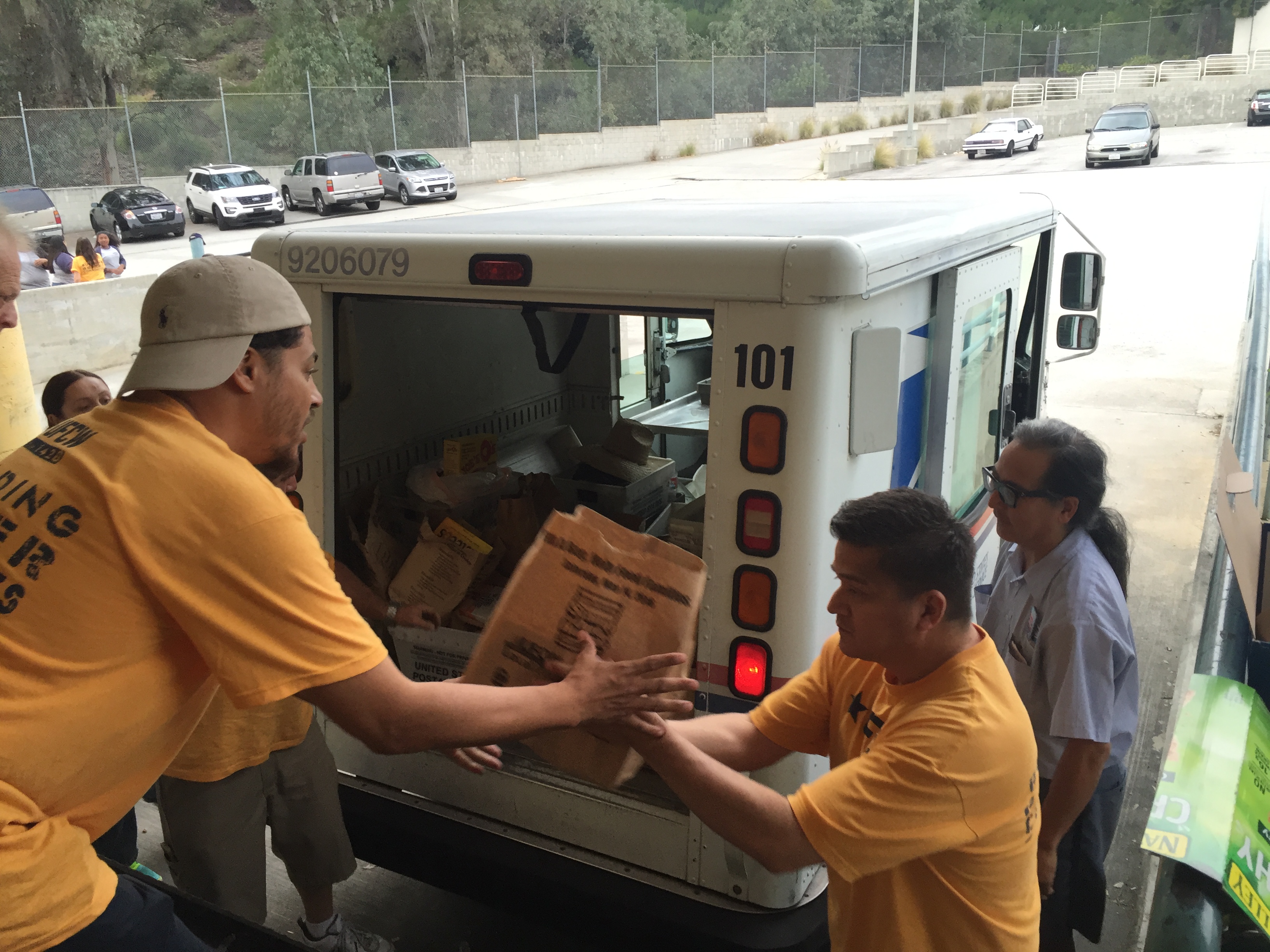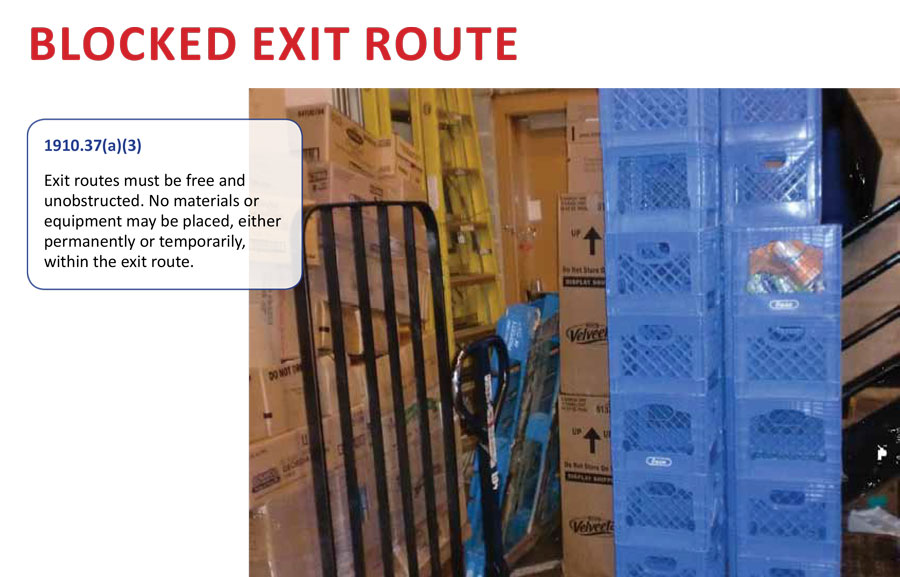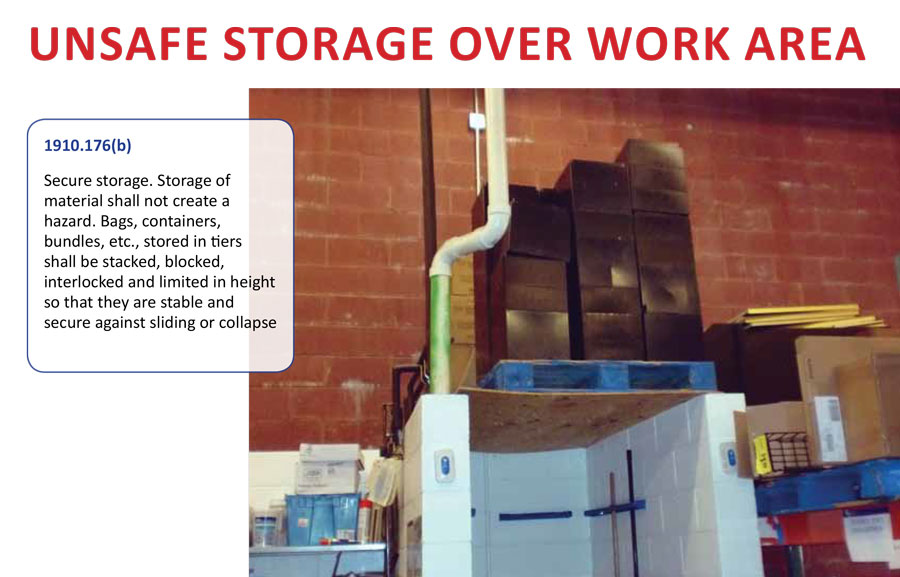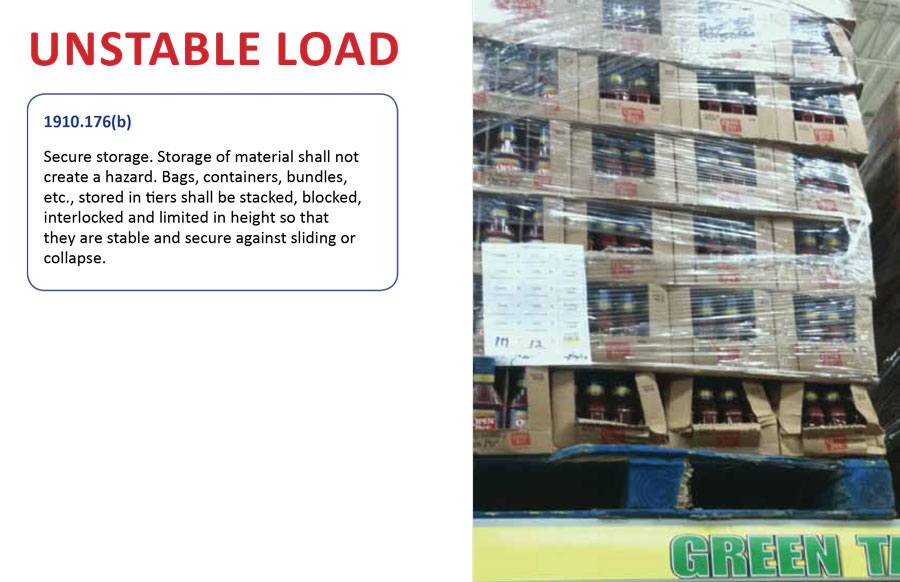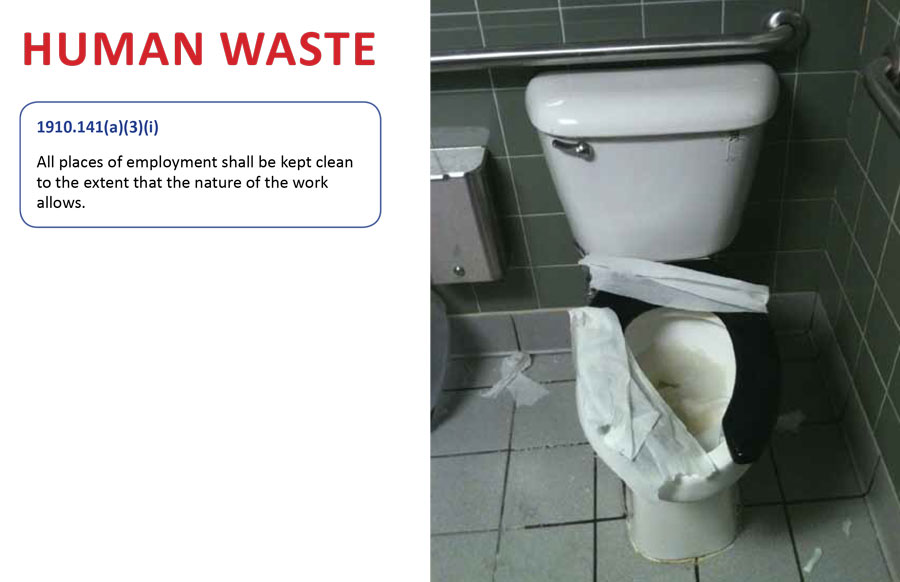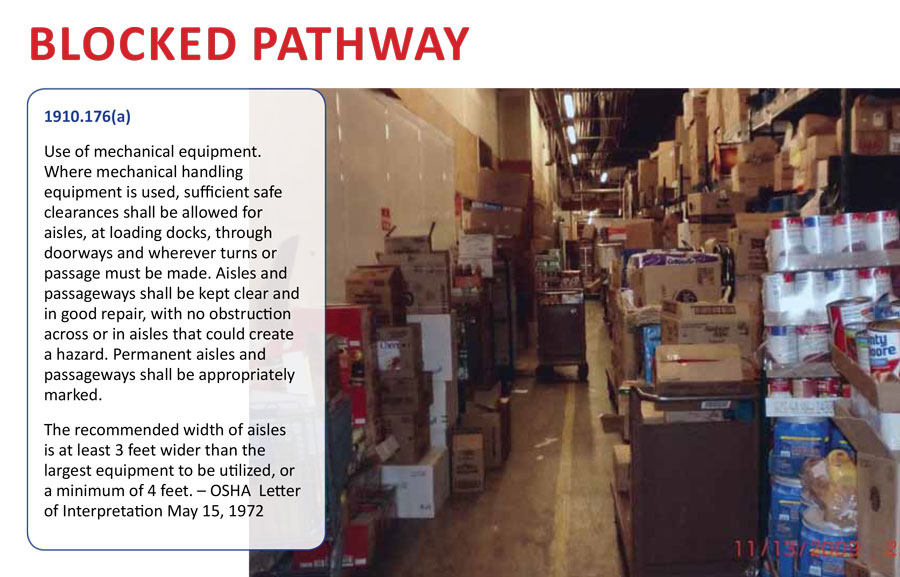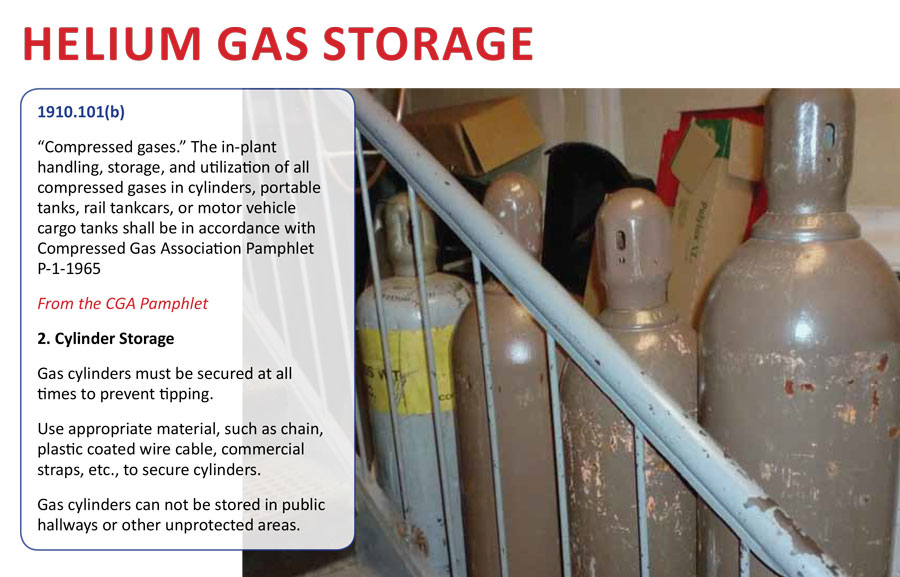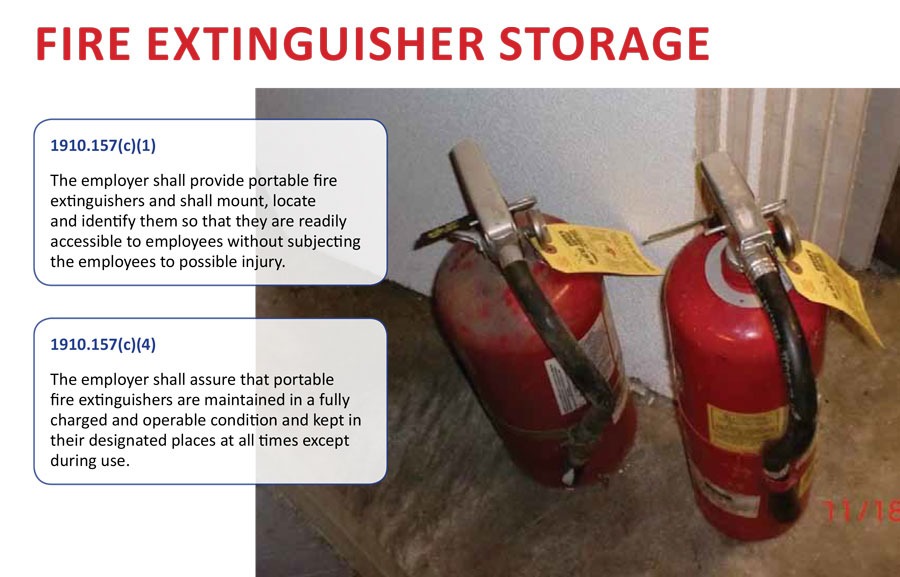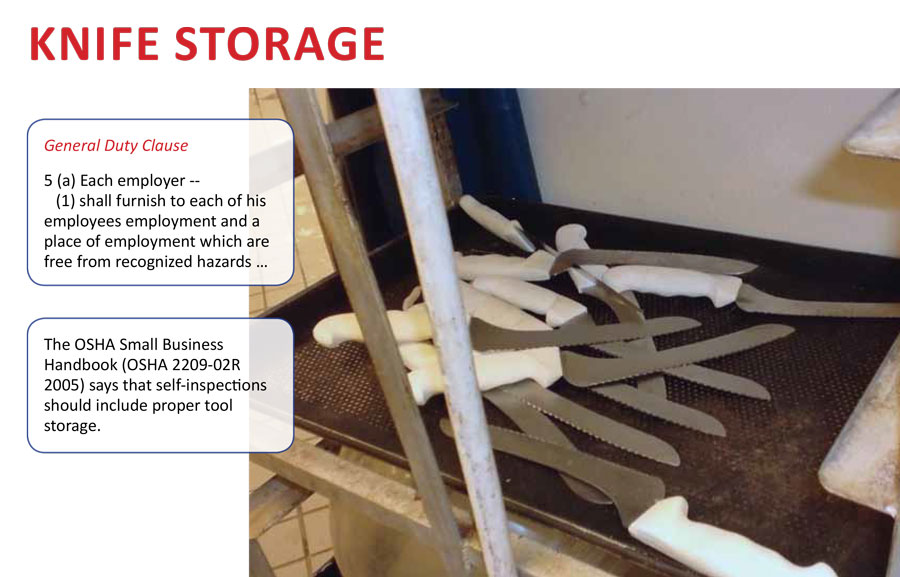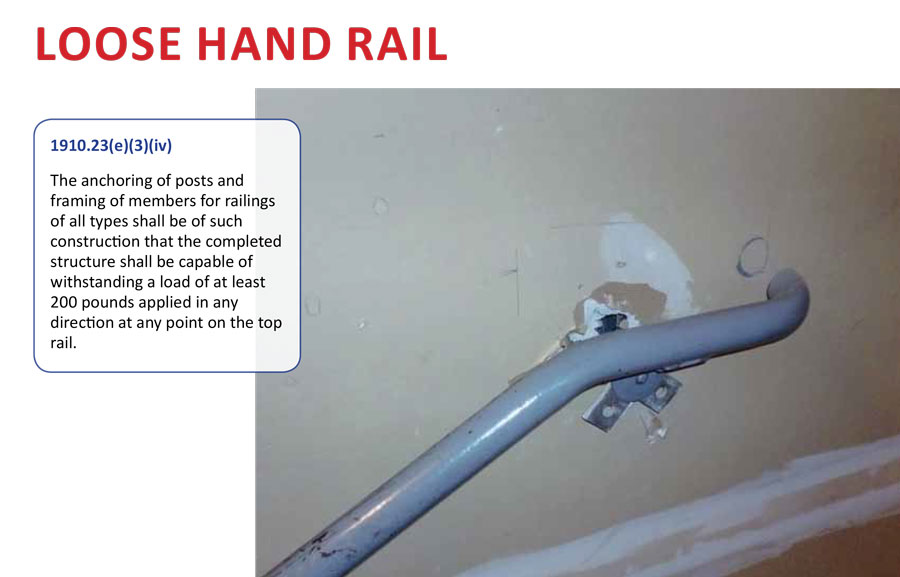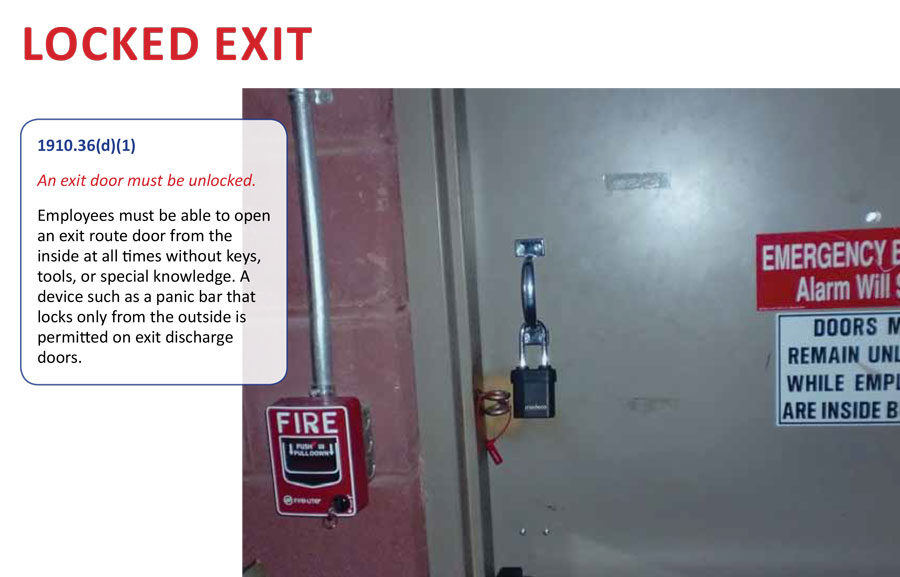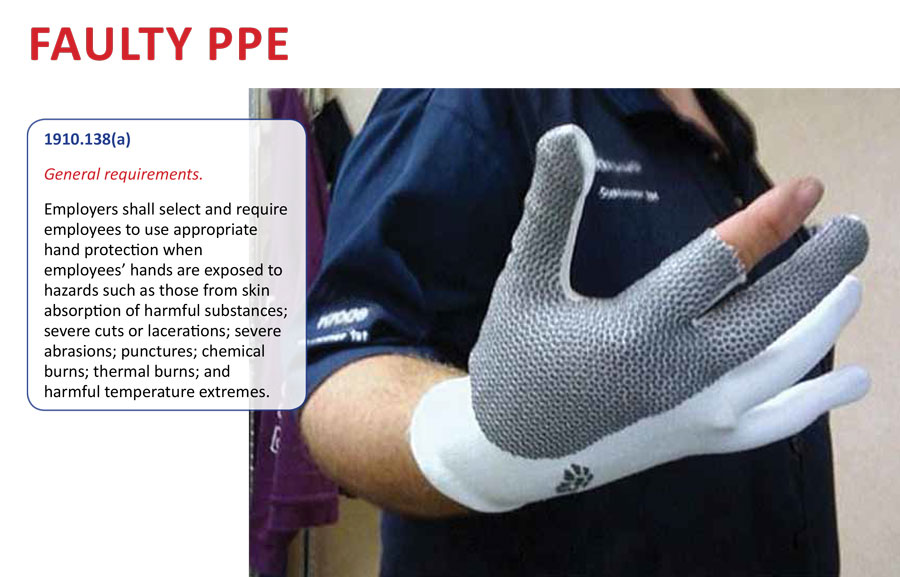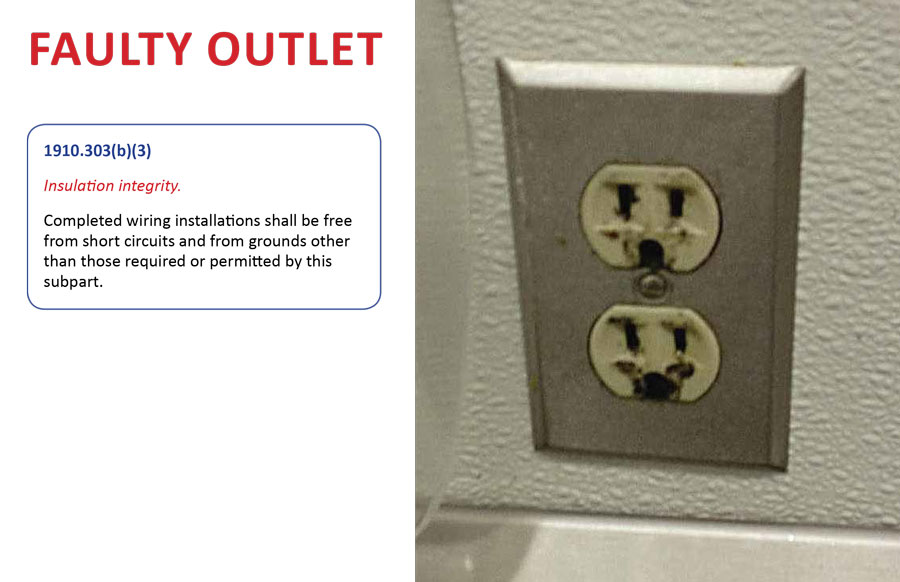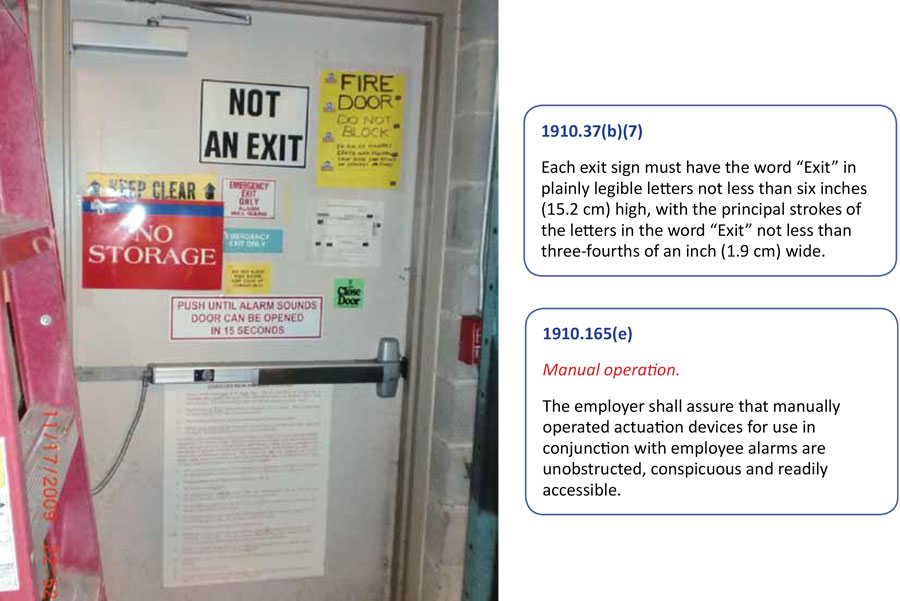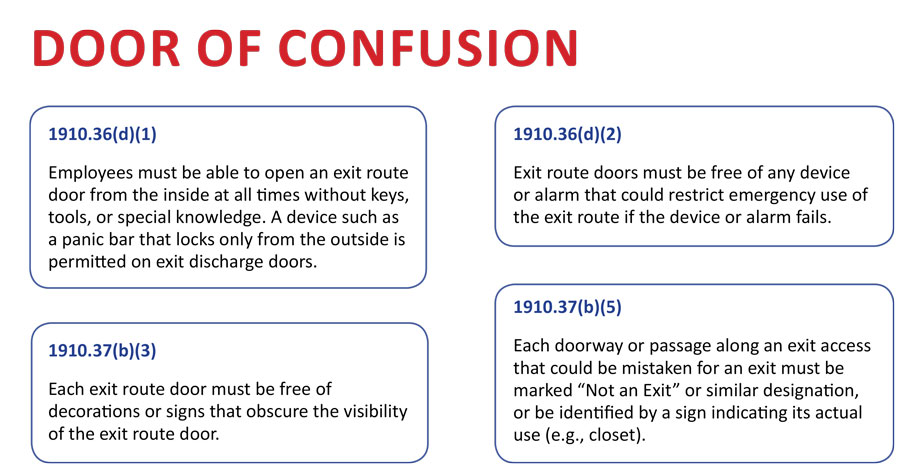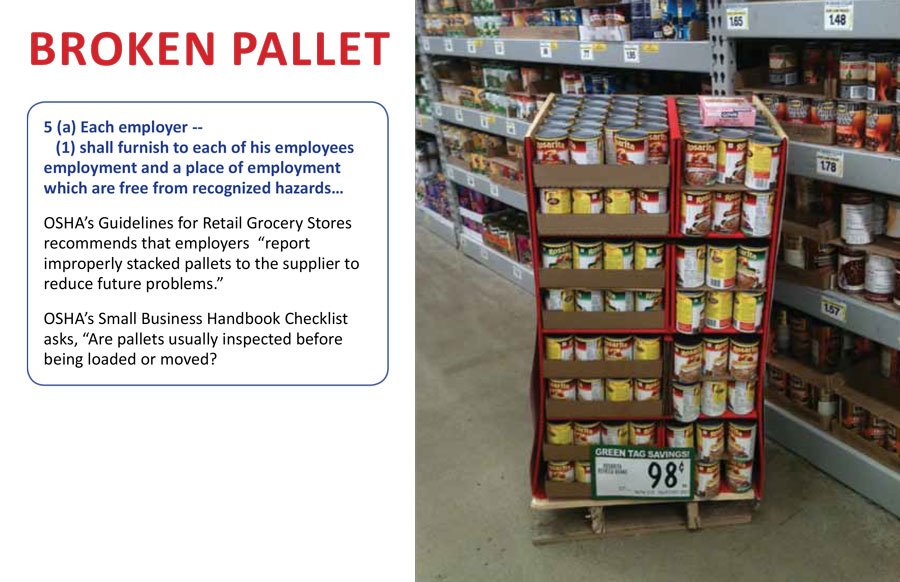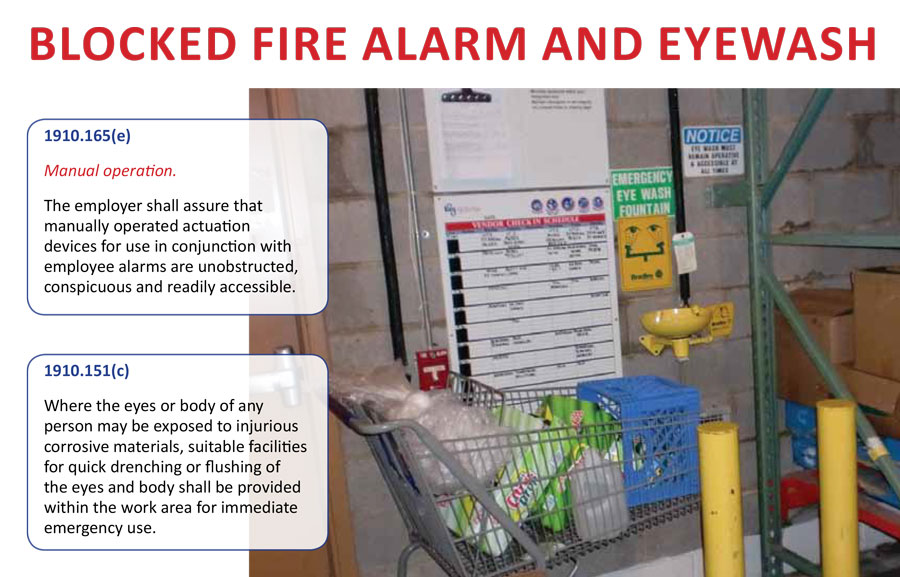July 17, 2014
Safety and Health: Hazards in the Retail Workplace
This guide was created to help make the legal language of the Occupational Health and Safety Administration (OSHA) easier to understand.
We hope the combination of the OSHA standards with photos of hazards will help you spot and eliminate dangerous situations. We invite you to read on and be alert for these hazards in your own workplace. Contact your Union Representative with questions or concerns.
May 30, 2012
Staying Informed and Updated on Your Plant’s Ammonia Safety Program
 Several of our UFCW members who work in meatpacking, poultry and food processing plants spend their days working around refrigeration systems that use ammonia – a Highly Hazardous chemical. It is easy and important for stewards to find out if their company is complying with OSHA’s standards about how to operate safely with Highly Hazardous chemicals. The main standard is Process Safety Management (PSM). PSM gives workers and their representatives the right to ask for information about the ammonia system.
Several of our UFCW members who work in meatpacking, poultry and food processing plants spend their days working around refrigeration systems that use ammonia – a Highly Hazardous chemical. It is easy and important for stewards to find out if their company is complying with OSHA’s standards about how to operate safely with Highly Hazardous chemicals. The main standard is Process Safety Management (PSM). PSM gives workers and their representatives the right to ask for information about the ammonia system.
OSHA’s PSM Standard applies to most meat packing, poultry, and food processing plants. One PSM requirement is that the company must conduct an audit of their compliance every three years. Stewards can request to see the recommendations from the past two audits and find out what actions have been taken. By looking at the audit results and the follow-up stewards can see if the company is taking their PSM seriously.
“When I was sent out for training, I received a lot of information about PSM that I realized could be helpful to not only me, but also my co-workers at the plant,” said Jim Oldenburg, a steward at JBS and a member of UFCW Local 1473 in Green Bay, Wisconsin.
Even though every worker at the plant cannot receive specialized PSM training, workers do have the right to stay informed about their plant’s PSM program and come to their stewards with questions or concerns. To help his co-workers at the plant, Oldenburg submitted a list of PSM questions and responses to the company. These questions were developed by the Industrial Refrigeration Consortium at the University of Wisconsin – Madison.
“People look to me to help them and I’m doing everything that I can for them every day. Having this information available is just one of them,” said Oldenburg.
Here are the ten questions Jim submitted to management. According to the PSM standard your company must respond adequately to your concerns. Their responses to these questions can give you a sense of the condition of your plant’s ammonia safety program. If you need help evaluating the company’s response you can email the UFCW Health and Safety Representative for Process Safety Management at bthielen@ufcw.org.
1. When was our last compliance audit?
2. Can you show me the closeout of recommendations from the last compliance audit?
3. Can you provide me a copy of the most recent incident report and documentation that shows how we closed out recommendations/from the incident report?
4. When was our last Process Hazard Analysis (PHA) conducted and can you show me documentation that closes out the recommendations from the last PHA?
5. How often do we certify our plant’s written operating procedures for the covered process?
6. What training program do we have for our operators and what are the means used to verify they have understood the training?
7. How often do we do refresher training?
8. Based on our plant’s mechanical integrity program, what is the next piece of equipment scheduled for retirement and when is it scheduled to come out of service?
9. What criteria do we use to evaluate contractors that work on our covered process?
10. What was the last change made to our system and can you show me the documentation for that change?
January 10, 2012
Is the meatpacking industry getting safer?
Upton Sinclair’s The Jungle was published in 1906, sparking a public outcry around safety issues in the meatpacking industry. That’s how long the industry has been infamous for its hazardous working conditions.
The good news is, according to new reports from the Bureau of Labor Statistics (BLS), workplace safety in the meatpacking industry is steadily improving, with injury and illness rates for full-time workers on the decline.
The bad news is, in comparison to other industrial and manufacturing sectors, meatpacking and poultry processing are still among the most dangerous. Food manufacturing workers are twice as likely to experience injuries and illnesses than industrial and manufacturing workers as a whole. The meatpacking industry also ranks high for severe injury and illness cases – meaning those that cause workers to miss days at work or those that necessitate restricted work activities or even job transfers. Nationally, the poultry industry has the fifth-highest rate of worker illness across all industries.
Though progress has been made on worker safety in the meatpacking and poultry industries, we must understand what the numbers really mean, and make sure we are addressing issues that really make a difference in improving safety and health in these industries.
Some in the meat industry, like the trade association (read: lobbying outfit) American Meat Institute, are quick to highlight improvement using data that does not reflect the most dangerous jobs in the industry. That’s a slippery slope – and one that risks obscuring the truth on safety for the sake of profit-margin. The truth is, there is some doubt about the accuracy of the BLS numbers themselves. Studies conducted by the National Institute of Occupational Safety and Health (NIOSH) conclude that both BLS and OSHA miss from 20 percent to as much as 50 percent of the nation’s workplace injuries. A number of factors can cause this kind of under-reporting: workers sometimes don’t report injuries because of fears surrounding their immigration status and retaliation by their employers; employers are motivated to under-count injuries in order to win safety awards, and managers are incentivized by low-injury bonuses; and finally, some employers have instituted programs requiring workers who report injuries or accidents to undergo drug testing – adding additional risk to reporting.
For all these reasons, we must not let a modest increase in overall workplace safety lull us into a false sense of security when it comes to the meatpacking and poultry processing industries. We must continue to strive for better and safer workplaces for all meatpacking and poultry processing workers – and for collective bargaining agreements as well as stronger regulations that make it safe for all workers to report hazards and injuries.
April 8, 2010
OSHA 300 Logs: An Important Tool To Improve Safety and Ensure Accountability
Safety is one of the most important issues at any plant. Preventing injuries at the workplace is about identifying hazards and getting them fixed, and stewards play a particularly important role in making sure this happens.
Many workers are already familiar with the Occupational Safety and Health Administration (OSHA), a division within the U.S. Department of Labor that sets and enforces safety standards in the workplace.
These standards are the law and employers are required to comply with them. Among these requirements is the OSHA Form 300. Most employers with 10 or more full-time employees are required to file this form, which is a yearly log of work-related injuries.
Miguel Luna, a steward from UFCW Local 2, works in a plant in Guymon, Okla. He has been an active member of his plant’s safety committee for more than four years.
“I joined the safety committee to help to keep my coworkers safe. Together with other members, we have helped to improve safety at the plant. The OSHA 300 logs are fundamental for our mission. They help a lot,” Luna said.
OSHA mandates that employers record all new cases of work-related fatalities, injuries and illnesses if they involve death, time away from work, restricted work, transfer from another job, medical treatment beyond first aid, loss of consciousness, or a significant injury or illness diagnosed by a physician or other licensed health care professional.
“An OSHA 300 log is where companies record the injuries that occur at the workplace,” said Luna. “By law, they have to report all the injuries to OSHA.”
The OSHA law gives workers and their unions the right to have access to injury logs.
Stewards, workers, and supervisors can use the OSHA 300 logs to help to improve safety in a food processing or meatpacking plant.
“At our plant, our safety committee meets once a month. We talk about how to improve safety at our plant,” said Luna. “The OSHA logs are very useful for those
of us on the committee, because we can see if we need to improve safety in one area or if we can do something different.”
Luna added that there have been several instances when the OSHA logs have helped the committee to improve safety at the plant.
“For example, if we see in the logs that many injuries are occurring on the line due to an ergonomic issue, then we look into what is causing that issue, we investigate, and once we have reached a conclusion, we meet with the plant’s safety director,” he said.
Unfortunately, in some instances, workplace injuries are being under-counted. This year OSHA has enacted an enforcement program to review the logs and make certain that employers record all injuries.
Luna said that stewards play an important role in making sure employers keep the log current.
“As stewards, we have to review the logs to make sure injuries are being recorded in an accurate and proper way,” he said. “I recommend that stewards stay on top of things and check the logs on a regular basis.”
He said that if a steward suspects that an injury has been inaccurately reported in the OSHA logs, the best way to solve any discrepancy is to talk to the injured worker, get the facts, and talk to the plant’s safety manager or supervisors to try to clarify the issues.
For Luna, the most important thing to do if an injury occurs is to make sure that the affected worker fully recovers.
“Stewards should check back with the injured worker and follow up throughout his or her recovery. We have to support each other and that means making sure injured workers get the proper treatment,” he added.
